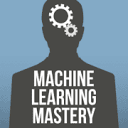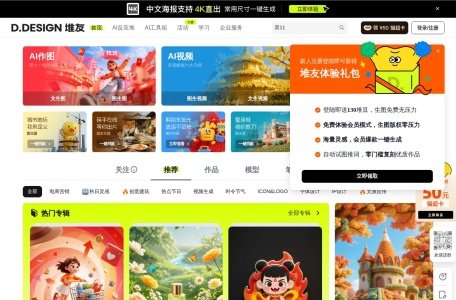
In an era where AI design tools are widely adopted, designers often face two critical pain points: “learning tools but failing to apply them” and “courses being disconnected from industry needs.” Duipai AI Learning—an Alibaba-backed professional learning platform focused on AI design—stands out with its core strengths of “systematic courses, authoritative certifications, and scenario-based practical training.” By integrating online courses, offline workshops, and industry certification resources, it builds a complete learning path for designers, spanning from basic skills to professional advancement. This guide, based on official information and hands-on experience, breaks down the platform’s core features, course structure, and usage strategies to help users master AI design skills efficiently.
I. Core Positioning: Beyond “Tool Training”—Focused on “AI Design Application”
- Authoritative Endorsement: Deeply collaborated with Alibaba International AITIC Certification, ensuring course content aligns with industry standards. Learning outcomes can be converted into authoritative certifications, solving the problem of “no recognition after learning.”
- Scenario-Oriented Design: Courses are centered on practical design scenarios such as e-commerce, branding, and video animation. This avoids pure theoretical teaching and ensures what is learned can be directly applied to work.
- Full-Stage Coverage: From “AI application general knowledge” to “vertical industry specialization” and “new strategic capabilities,” it caters to the needs of designers at all stages—from novices to design managers—breaking the “stage gap” dilemma.
II. Core Feature Breakdown: Four Modules Building a “Learn-Practice-Test-Apply” Loop
(1) Course Learning: Systematic Content Under the C-TGB Framework
- C (Career): Focuses on design career advancement, including “C1 Basic Professional Skills” (e.g., e-commerce design fundamentals, Photoshop basics), “C2 Standard Practical Solutions” (e.g., brand logo design processes, short video storyboard design), and “C3 Cross-Disciplinary Solutions” (e.g., design-operation collaboration plans). Ideal for building a solid professional foundation.
- T (Technical): Emphasizes AI tools and practical skills, covering “T1 Skill Basics & Tool Operation” (e.g., the “Getting Started with Duipai” series, AI design tool parameter settings), “T2 Practical Cases” (e.g., AI-driven rapid e-commerce detail page design, AI creative implementation for brand posters), and “T3 Vertical Industry Topics” (e.g., AI design compliance for cross-border e-commerce, AI optimization for maternal and child product visuals). Through hands-on testing, following the “T2 Practical Cases” allows mastery of the full AI design process for e-commerce main images within one week.
- G (General): Cultivates general AI design capabilities, including “G1 AI Application Literacy” (e.g., AI design ethics, comparisons of mainstream AI tools), “G2 AI General Efficiency Enhancement” (e.g., AI batch processing of design materials, AI-driven intelligent revision of design drafts), and “G3 AI Business Efficiency Enhancement” (e.g., optimizing design approval processes with AI, reducing team communication costs). Helps designers upgrade from “knowing how to use tools” to “using AI to improve efficiency.”
- B (Business): Targets design managers or entrepreneurs, covering “B1 New AI Strategic Capabilities” (e.g., design team structure in the AI era, AI-driven design cost control), “BM New AI Management Capabilities” (e.g., building AI skill training systems for designers), and “BL New AI Business Models” (e.g., monetization paths for AI design services). Fills the gap of “missing design management courses” on most platforms.
(2) Offline Workshops: From “Online Learning” to “Offline Practice”
- AIGC Design Specialized Camps: 2–3 day intensive training covering the full process from “AI creative brainstorming → design implementation → commercial adaptation.” For example, the “Cross-Border E-Commerce AI Visual Full-Case Workshop” requires participants to complete designs from AI-generated drafts to compliance-approved final versions under instructor guidance. The pass rate is approximately 75%, and participants receive a workshop certificate upon completion.
- Basic Literacy Workshops: “AI Design Introductory Camps” for novice designers, adopting a “theory + group practice” model (e.g., completing basic brand VI design using AI tools). Suitable for those lacking practical experience to quickly adapt to the rhythm of design work.
(3) Note Sharing: Community Interaction for Knowledge Reuse
- Learning Notes: Such as “AI Design Tool Prompt Optimization Tips” and “AI Pitfalls to Avoid in E-Commerce Design.” Other users can like, save, and comment. Testing shows that the “practical skill adoption rate” of popular notes exceeds 60%.
- Creative Works: Uploading AI design practice works with annotations on tools used, design ideas, and revision processes. Instructors provide occasional reviews; for example, one user shared “AI Main Image Design for Maternal Products,” and after optimizing color matching based on instructor suggestions, the click-through rate increased by 30%.
- Industry Insights: Sharing AI design trends and updates from top companies, helping users broaden their horizons and avoid “working in isolation.”
(4) Certification & Employment: AITIC Certification to Boost Career Value
- Collaborative Certification: Jointly launched the “Cross-Border E-Commerce + AI” certification course with Alibaba International AITIC. After completing 9 chapters (108 lessons) and passing the assessment (including a theoretical exam and practical work review), users receive dual certificates—the Duipai AI Learning Completion Certificate and the Alibaba International AITIC Certification. This certificate is highly recognized in the cross-border e-commerce design field; testing shows some foreign trade enterprises list it as a preferential recruitment criterion.
- Skill Certifications: “Tool Operation Certifications” and “Practical Case Certifications” for specific skills (e.g., “Duipai AI Design Tool Advanced Certification”). These can be displayed on personal profiles to enhance trust from clients or employers.
- Employment Matching: Certified users gain access to the “Duipai Talent Pool,” and Alibaba 合作 enterprises (e.g., Tmall merchants, Alibaba International Station service providers) conduct targeted recruitment—solving the problem of “difficulty finding jobs after learning.”
III. Usage Guide: 3 Steps to Start AI Design Learning
(1) Step 1: Clarify Needs and Select Courses via the C-TGB Framework
- Novice Designers (0–1 Year Experience): Prioritize “C1 Basic Professional Skills” + “T1 Skill Basics.” For example, first learn E-Commerce Design Fundamentals (C1-1) to build aesthetic and software foundations, then Getting Started with Duipai (T1-12) to master AI tool operations. Avoid advanced courses directly to prevent frustration.
- Senior Designers (2–5 Years Experience): Focus on “T2 Practical Cases” + “G2 AI General Efficiency Enhancement,” such as AI-Driven Rapid E-Commerce Detail Page Design (T2) and AI Batch Processing of Design Materials (G2). Use AI to improve work efficiency and free up time for creative tasks.
- Design Managers (5+ Years Experience): Focus on “B1 New AI Strategic Capabilities” + “T3 Vertical Industry Topics,” such as Building Design Team Structures in the AI Era (B1) and AI Design Compliance Management for Cross-Border E-Commerce (T3). Transition from “executor” to “manager.”
(2) Step 2: Combine “Online + Offline” for Maximum Learning Effect
- Online Learning Tips: Enable “variable playback speed + note-taking” while watching videos. Highlight “practical steps” and “instructor tips” (e.g., “When generating main images with AI, retain product details and avoid over-stylization”). Complete supporting assignments within 24 hours of the course to reinforce memory.
- Offline Workshop Timing: Attend workshops after completing corresponding online courses. For example, after finishing the “Cross-Border E-Commerce + AI” online course, join the same-themed offline workshop. Bring work-related questions (e.g., “How to align AI-generated designs with brand tone”) to get targeted guidance.
(3) Step 3: Leverage the Community and Certifications to Enhance Outcomes
- Regularly Share Notes: After completing a module, organize “3 core tips + 1 pitfall to avoid” and share them in the community. This deepens understanding and may attract instructor reviews.
- Pursue Certification: For those targeting cross-border e-commerce design, prioritize the “Alibaba International AITIC Certification.” Focus on reviewing the “practical work evaluation criteria” (e.g., design compliance, rational AI usage) during preparation. Testing shows a pass rate of over 80% with one month of preparation.
IV. Application Scenarios & Target Audience
(1) Core Application Scenarios
- Workplace Skill Enhancement: E-commerce designers learn “T2 Practical Cases” to improve AI design efficiency; brand designers learn “C2 Standard Practical Solutions” to optimize logo design processes. Most users report “over 40% improvement in work efficiency” after learning.
- Career Transition Preparation: Traditional graphic designers switching to cross-border e-commerce design can master cross-border design rules through “T3 Vertical Industry Topics”; UI designers expanding AI skills can take “G2 AI General Efficiency Enhancement” courses.
- Corporate Training: E-commerce companies use “C1 Basic Professional Skills” for new employee training; design agencies use “B1 New AI Strategic Capabilities” to develop management talent. The platform supports “custom corporate courses” tailored to team needs.
- Hobby Development: Individuals interested in AI design can start with “G1 AI Application Literacy” + free courses (e.g., Design Theory Fundamentals (C1-2)) to explore their interests at low cost.
(2) Audience Adaptability Assessment
Audience Type | Core Needs | Recommended Feature Combination | Adaptability Score |
Novice Designers (0–1 Year) | Build foundations + master AI tools | C1 Basic Professional Skills + T1 Skill Basics + Free Courses | ★★★★★ |
Senior Designers (2–5 Years) | AI efficiency + commercial application | T2 Practical Cases + G2 AI General Efficiency + Certification Courses | ★★★★★ |
Design Managers | Team empowerment + strategic vision | B1 New AI Strategic Capabilities + T3 Vertical Industry Topics | ★★★★☆ |
Design Enthusiasts | Interest exploration + low-cost learning | G1 AI Application Literacy + Free Note Sharing | ★★★☆☆ |
V. Usage Tips & Pitfalls to Avoid
- Free Courses ≠ Basic Courses: Some free courses (e.g., basic chapters of Cross-Border E-Commerce + AI, Design Theory Fundamentals) are of high quality. Novices do not need to purchase paid courses blindly—use free courses to assess if the learning rhythm fits their needs.
- Prepare for Workshops in Advance: Before attending offline workshops, review corresponding online courses and bring “unresolved work problems” (e.g., “How to make AI-generated designs align with brand identity”) to get targeted guidance.
- Focus on Practice for Certification: The “practical work review” accounts for 60% of the Alibaba International AITIC Certification. Do not just memorize theories—practice the “full AI design process” (from requirement analysis to final draft delivery) to ensure works meet commercial application requirements.
VI. Conclusion: The Core Value of Duipai AI Learning
Relevant Navigation


Sapling AI Content Detector

MGX(MetaGPT-X)

BigModel

Tuanxiang (Formerly MitataAI)

Writecream AI Content Detector

腾讯扣叮

Day of AI

